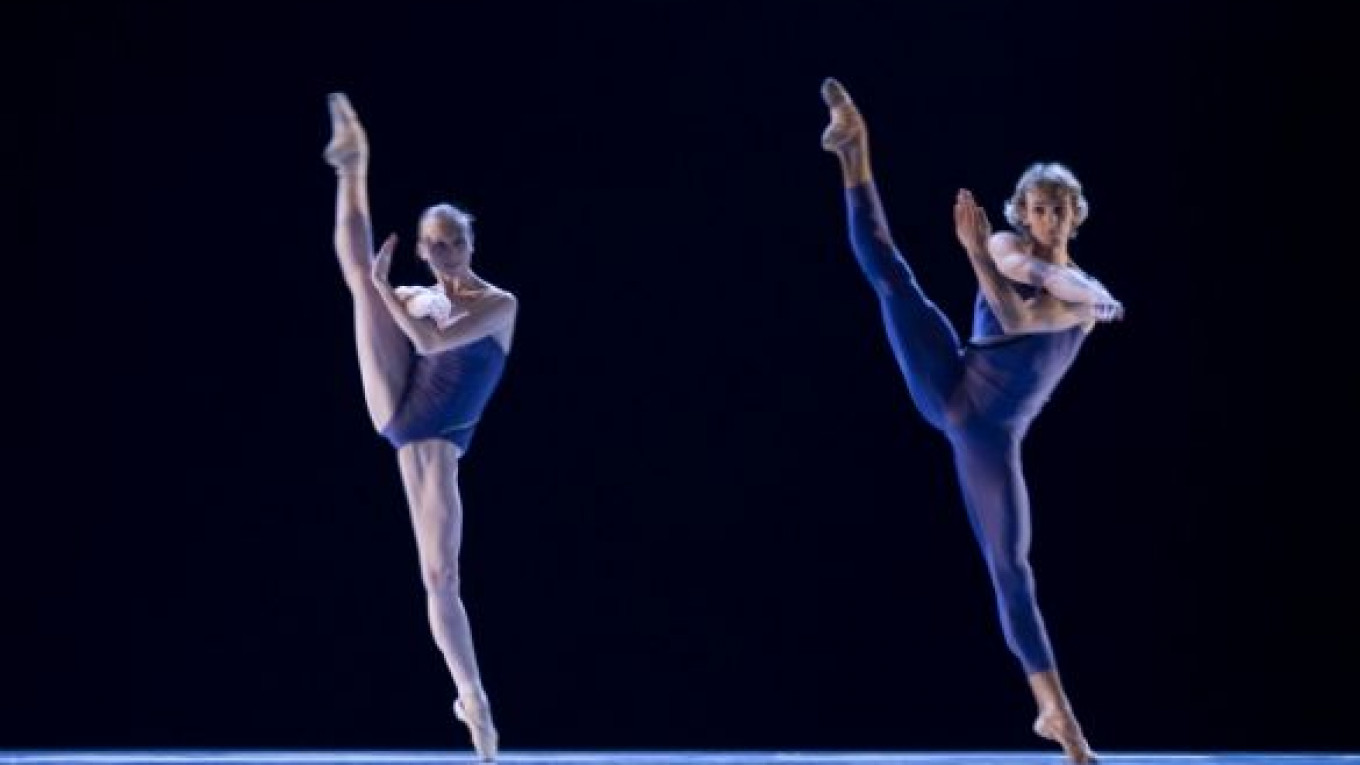With the Bolshoi’s ballet company largely caught in the doldrums since the departure two years ago of artistic director Alexei Ratmansky, the real action on the Moscow ballet scene is more likely to be found these days near the opposite end of Bolshaya Dmitrovka, at the Stanislavsky and Nemirovich-Danchenko Musical Theater.
Since taking command of ballet at the Stanislavsky and Nemirovich-Danchenko in fall 2008, former Bolshoi premier danseur Sergei Filin has brought superb new talent to the theater’s roster of soloists and corps de ballet, raised the standards of dance to a level that often rivals the best to be seen at the Bolshoi and presided over a series of notable additions to the theater’s ballet repertoire, including, perhaps most importantly, the assimilation of choreography by contemporary masters of the art previously unrepresented on the Russian stage.
Leading off the parade of contemporary choreography at the Stanislavsky and Nemirovich-Danchenko, in summer 2009, was Spaniard Nacho Duato’s “Na Floresta.” Next came “La petite mort” and “Sechs Taenze” from the near-legendary Czech choreographer Jiri Kylian, which premiered last July. And earlier this month, the theater put on display the results of what seemed an even greater challenge, a ballet titled “Slice to Sharp” by Finnish-born Jorma Elo, choreographer in residence since 2005 of America’s Boston Ballet.
Trained at St. Petersburg’s famed Vaganova Academy, Elo went on to dance with the cutting-edge Cullberg Ballet in Sweden and the Netherlands Dance Theater. Since turning to choreography a decade ago, he has created ballets for such renowned companies as the American Ballet Theater, San Francisco Ballet and New York City Ballet, where “Slice to Sharp” made a highly praised debut four years ago.
Elo’s ballet is a totally abstract work, set to the music of Baroque-era composers Heinrich Biber and Antonio Vivaldi. Four pairs of dancers appear at the opening, and over the next half hour or so, in various combinations, provide an exhilarating, virtuoso display of dance in which speed is of the essence. While Elo’s choreography appears essentially tied the classical dance lexicon, his embellishments — the outstretched arms and spinning, twisting lifts — plant the ballet firmly in the dance world of today.
As they did in the case of Duato’s and Kylian’s ballets, the Stanislavsky and Nemirovich-Dancheko’s classically trained dancers came amazingly close to complete mastery of an unfamiliar and intricate dance vocabulary. The minor flaws and uncertainties noted along the way will most likely disappear in the course of further performances.
“Slice to Sharp” forms part of a dazzling quadruple bill that also includes dancer Anton Dolin’s 1940 “Pas de quatre,” a re-creation in spirit, though not in choreography — which has long been lost — of a work originally danced a century earlier by the four greatest ballerinas of their day, and the two masterful ballets by Kylian, which the company now dances with even greater confidence than at their premiere in July.
Leaving aside French choreographer Angelin Preljocaj’s unfortunate “Creation — 2010,” which opened the Bolshoi’s season in September, “Slice to Sharp” marked the real beginning of what promises to be a banner year for contemporary ballet in Moscow. Still to come at the Stanislavsky and Nemirovich-Danchenko, in February, is “The Little Mermaid” by American-born, Hamburg-based choreographer John Neumeier, with whose profoundly moving dance version of Anton Chekhov’s play “The Seagull” nearly four years ago the theater first tested the waters of present-day choreography from abroad. And in May, Nacho Duato returns to stage yet another of his one-act ballets.
Toward the end of December, the Bolshoi joins in with the first work for a Moscow company by another acclaimed choreographer of American origin, William Forsythe, who, like Neumeier, has pursued a career mainly in Germany. April will see the return of Ratmansky, with a brand-new, full-length dance version of Honore de Balzac’s novel “Lost Illusions,” set to a score by Leonid Desyatnikov, with whom Ratmansky collaborated two years ago in creating “Russian Seasons,” a work that remains perhaps the most sparkling gem in the Bolshoi’s entire ballet repertoire. And for July, the theater promises a program that includes works by Kylian and by Wayne McGregor, widely regarded as present-day Britain’s leading choreographer.
Visiting companies are also due to enliven the contemporary ballet scene, among them the Paris Opera Ballet, in February, with Preljocaj’s “Park,” said to be far superior to his recent Bolshoi “Creation — 2010,” and the American Ballet Theatre, in March, with a recent one-act ballet by Ratmansky and the world premiere of a work by the highly regarded young French choreographer Benjamin Millepied.
“Slice to Sharp,” “Pas de quatre,” “La petite mort” and “Sechs Taenze” next play on Nov. 23, and Dec. 6 and 22, at 7 p.m. at the Stanislavsky and Nemirovich-Danchenko Musical Theater, located at 17 Bolshaya Dmitrovka. Metro Chekhovskaya, Pushkinskaya. Tel. 629-2835. www.stanmus.ru
A Message from The Moscow Times:
Dear readers,
We are facing unprecedented challenges. Russia's Prosecutor General's Office has designated The Moscow Times as an "undesirable" organization, criminalizing our work and putting our staff at risk of prosecution. This follows our earlier unjust labeling as a "foreign agent."
These actions are direct attempts to silence independent journalism in Russia. The authorities claim our work "discredits the decisions of the Russian leadership." We see things differently: we strive to provide accurate, unbiased reporting on Russia.
We, the journalists of The Moscow Times, refuse to be silenced. But to continue our work, we need your help.
Your support, no matter how small, makes a world of difference. If you can, please support us monthly starting from just $2. It's quick to set up, and every contribution makes a significant impact.
By supporting The Moscow Times, you're defending open, independent journalism in the face of repression. Thank you for standing with us.
Remind me later.






